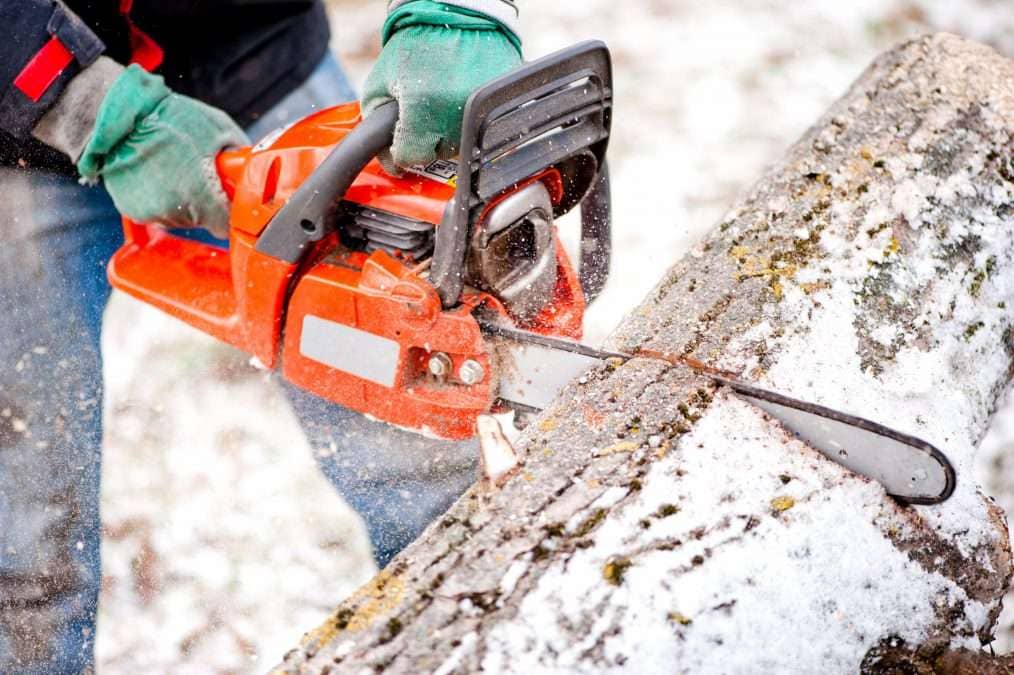Addressing the Neighbor’s Tree Issue
Addressing the issue of a neighbor’s tree potentially endangering property requires careful consideration and understanding. Recognizing the nuances of property damage and tree health is essential for effective communication and resolution.
Understanding Property Damage
When a neighbor’s tree poses a threat to one’s property, it is crucial to address any concerns with the neighbor directly. If the neighbor’s dying tree were to fall, causing damage to personal property, such as a garage, it can lead to significant liability on their part due to negligence (California Courts – Self Help). A neighbor may be held responsible for the damage if they fail to attend to healthy upkeep of the trees.
| Damage Type | Potential Costs |
|---|---|
| Garage Damage | $1,000 – $15,000 (depending on severity) |
| Landscaping Damage | $500 – $5,000 |
| Personal Injury Claims | Varies by severity |
It’s imperative for property owners to keep written records of any discussions and incidents related to the tree. If necessary, this documentation can support claims should the need for legal action arise later.
Recognizing Tree Health Issues
Identifying the signs that indicate a tree may need removal can facilitate more effective discussions with a neighbor. Warning signs of a declining tree include:
- Significant Lean: A noticeable tilt can signal instability.
- Hollow Trunk: Cavities within the trunk often indicate decay.
- Visible Wounds: Cracks, cuts, or fungal growth may suggest the tree’s health is compromised.
If there are any concerns about the tree, discussing the possibility of hiring a certified arborist for professional assessment can be beneficial. Offering to share the costs of the inspection can ease the burden on the neighbor and demonstrate a cooperative spirit.
It is important to note that cutting down the tree without permission is illegal, even if its branches extend over the property line (Lawn Love). This cooperative approach, combined with a thorough understanding of tree health issues, is essential in navigating a potential dispute caused by a neighbor’s tree. For further assistance in this matter, refer to resources on resolving tree disputes with neighbors or check out a sample letter to neighbor about dead tree.
Legal Considerations in Ohio
When dealing with a neighbor’s tree endangering property, understanding the legal framework is crucial. Legal considerations in Ohio encompass the statute of limitations for property damage and the potential for taking legal action if necessary.
Statute of Limitations for Property Damage
In Ohio, the statute of limitations for filing a property damage lawsuit is important to note. According to the Ohio Revised Code, the filing deadline for a lawsuit related to damage to real property is four years from the date of the wrongful action.
For clarity, here are the applicable deadlines:
| Type of Damage | Statute of Limitations |
|---|---|
| Damage to Real Property (e.g., damage from a tree) | 4 years |
| Damage to Personal Property (e.g., vehicle damage) | 2 years |
Missing the filing deadline can lead to the court dismissing the case, which would result in losing the right to seek any legal remedy for the damaged property.
Taking Legal Action
If discussions with a neighbor do not lead to a resolution regarding a hazardous tree, legal action may be necessary. If the tree poses a significant risk, residents may pursue a litigation option known as a nuisance claim. This legal action can compel the neighbor to address the tree threatening safety or property value.
Before proceeding with a lawsuit, it’s typically advisable to gather concrete evidence regarding the tree’s condition and the potential damage it poses. This may include photographs, witness statements, and documentation of any communications with the neighbor. If formal legal action is taken, it is recommended to consult with a legal expert for guidance on best practices and potential outcomes.
For those considering writing a letter about a neighbor’s tree, resources such as our sample letter to neighbor about dead tree can provide helpful guidance in constructing an effective communication.
Communication with Neighbor
Addressing concerns about a neighbor’s tree can be sensitive and requires a thoughtful approach. Open communication is essential for resolving issues related to a neighbor’s tree endangering property.
Initial Discussion and Tree Inspection
The first step is to engage in a face-to-face conversation with your neighbor regarding any concerns about the condition of their tree. Signs that the tree may need to be removed include a significant lean, a hollow trunk, and visible wounds. It is critical to handle this discussion with empathy and respect, as the neighbor may not be aware of the potential danger. Discussing the tree’s condition can pave the way for collaborative solutions.
If the neighbor is receptive but uncertain about the tree’s health, encourage them to hire a certified arborist for a professional inspection. Offering to share the cost of the inspection can facilitate their willingness to take action. If the arborist confirms that the tree poses a threat and recommends its removal, this may be sufficient for the neighbor to comply with the advice.
Sending a Formal Letter
If the neighbor does not respond positively after the initial discussion or fails to address your concerns, writing a formal letter can be an effective next step. This letter should clearly outline your concerns about the tree and the potential risks associated with it. It is also advisable to mention that if the tree causes damage or harm, you may have to explore legal action.
Ensure that the letter is polite yet assertive. Include the following key points in your correspondence:
- A thorough explanation of the tree’s condition and potential hazards.
- Mention that you have already attempted to discuss the issue face-to-face.
- Offer again to share the cost of hiring an arborist for a professional opinion.
- State your hopes for a resolution before escalating the matter.
Here’s a simple format for the letter:
| Section | Content |
|---|---|
| Greeting | Address the neighbor by name. |
| Introduction | Briefly state the purpose of the letter. |
| Main Concerns | Detail the tree’s condition and potential risks. |
| Previous Discussion | Reference your earlier conversation about the tree. |
| Next Steps | Propose consulting an arborist and share potential legal consequences. |
| Closing | Thank them for their understanding and express hope for a resolution. |
A well-crafted letter serves as a record of your communication and may be used in the future if legal action is necessary. Always save a copy of this correspondence for your records. For a more detailed example of a letter, refer to our sample letter to neighbor about dead tree.
Should all attempts to communicate fail, further steps may be needed, such as consulting with a lawyer. Understanding the situation can aid in fostering a more collaborative environment with your neighbor while addressing any property concerns effectively. If you’re seeking guidance on this topic, consider visiting our links on resolving tree disputes with neighbors and dead tree on neighbor’s property.
Escalating the Matter
When previous attempts to resolve issues with a neighbor’s tree have failed, it may become necessary to take further action. This section discusses the steps for seeking legal assistance and the importance of documenting property damage.
Seeking Legal Assistance
If addressing the issue with your neighbor does not yield results, consulting legal counsel can be a vital next step. A lawyer experienced in property law can provide guidance on how to navigate the complexities surrounding the situation. In some instances, it may be necessary to file a nuisance claim if the neighbor’s tree is significantly impacting the enjoyment and use of your property.
In Ohio, the statute of limitations for property damage lawsuits resulting from torts is four years from the date of the wrongful action (Nolo). Missing this deadline could result in the dismissal of the case, which means losing the right to seek any legal remedy for the damage inflicted by your neighbor’s tree.
| Action Item | Importance | Deadline |
|---|---|---|
| Consult an attorney | Understand legal options | As soon as issues arise |
| File a lawsuit | Seek compensation or remediation | Within 4 years of the incident |
Documenting Property Damage
Thorough documentation of any property damage caused by the neighbor’s tree is essential. This includes taking clear photographs of the damage, showing the extent of injury to your property and the proximity of the tree. Capturing detailed images can serve as critical evidence if legal action becomes necessary (Lawn Love).
In addition to photographs, it is wise to keep a detailed log of all interactions with your neighbor regarding the tree. This log should include dates of conversations, any written correspondence, and notes on the condition of the tree over time. Should the matter escalate to court, this log can provide helpful context.
Here are some key points to document:
| Documenting Aspect | Recommended Action |
|---|---|
| Photographic Evidence | Capture images of damage and tree proximity |
| Interaction Log | Record dates, times, and details of discussions |
| Correspondence | Save copies of any letters or emails sent |
For more specific help, consider visiting our article on dead tree on neighbor’s property or reviewing a sample letter to neighbor about dead tree. Taking these steps can empower you to navigate issues stemming from a neighbor’s tree effectively, ensuring your property is protected.










